Dog Behavior: Understanding and Preventing Dog Bites and Aggression Causes
Understanding the behavior of dogs is essential for preventing dog bites and managing aggression.
Canine aggression can manifest in various forms and may be triggered by multiple factors including pain, fear, or even genetic traits.
It’s important to recognize the signs of aggression in dogs, such as growling, baring teeth, or snapping, as these are indicators that a dog is feeling threatened or uncomfortable.
By identifying the causes of aggressive behavior, effective measures can be implemented to prevent it.
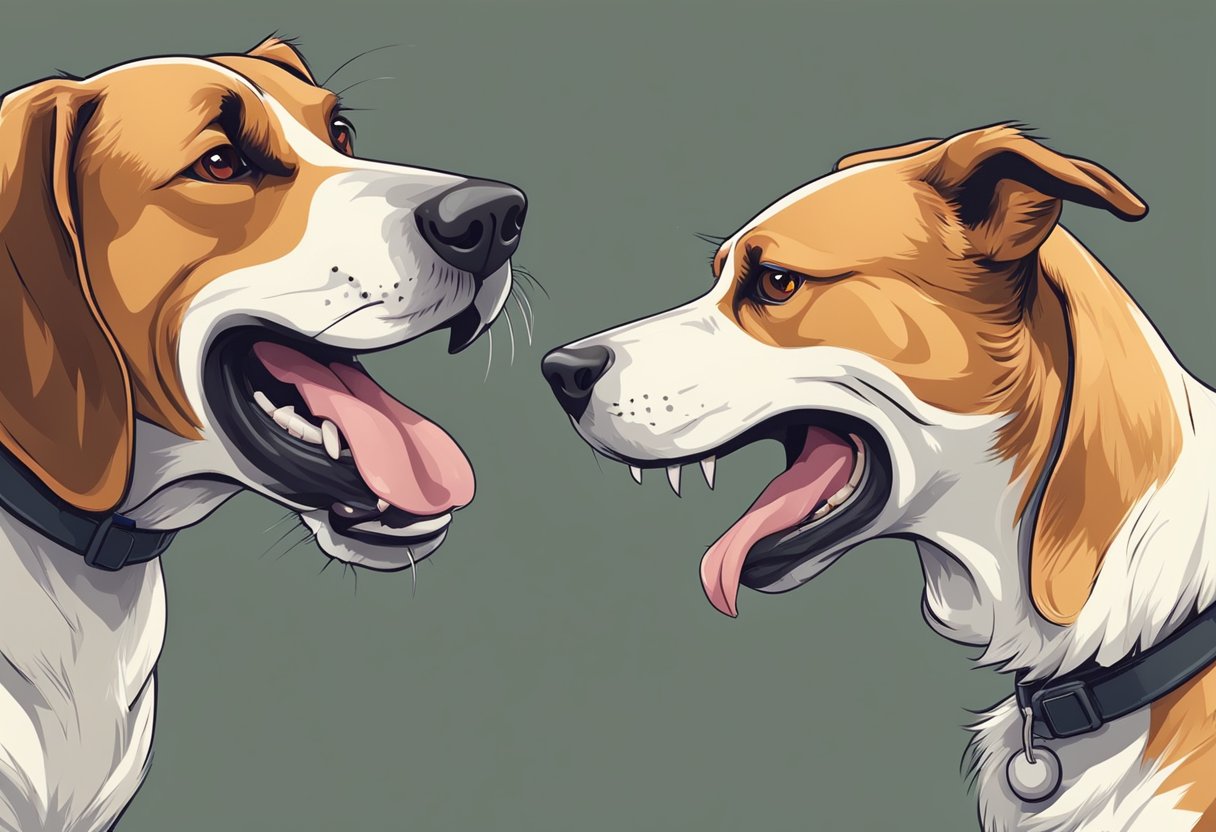
Communication with dogs goes beyond verbal commands; it includes body language and social cues.
As a responsible dog owner or an individual interacting with dogs, it’s crucial to interpret these subtle signs to understand what a dog might be feeling.
Proper socialization, consistent training, and creating a stable environment play significant roles in preventing aggression.
If these methods are not sufficient, professional intervention from a veterinarian or a qualified dog behaviorist may be necessary.
Key Takeaways
- Recognize and address signs of aggression promptly.
- Interpret and respect canine body language for safety.
- Consult professionals for persistent behavioral issues.
Understanding Canine Aggression
Aggression in dogs is a complex behavior often misunderstood by pet owners. By grasping the causes, recognizing the signs, and identifying the various types, you can take proactive steps to prevent and manage aggressive behavior in your canine companion.
Causes of Dog Aggression
Aggression can stem from multiple factors. At the core, it is often a response to a perceived threat, but the underlying reasons can be varied:
- Fear aggression: occurs when a dog feels trapped or threatened.
- Territorial aggression: dogs may defend their space against perceived intruders.
- Resource guarding: is a form of possessive aggression where a dog protects items like food or toys.
- Protective aggression: similar to possessiveness but directed towards guarding people or other pets.
- Dominance: less about social status and more about how a dog perceives its control over situations or beings.
- Pain or illness: can cause a usually placid dog to act out aggressively.
- Medical conditions and stress: also play crucial roles in shaping aggressive behavior.
Signs of Aggressive Behavior
Being able to identify warning signs of aggression can help prevent bites and other aggressive outcomes. Key signs include:
- Growling or snarling
- Standing rigid and still
- Lip lifting to show teeth
- Quick nips or bites that do not break the skin
- "Muzzle punch" (the dog punches with its nose)
- Prolonged stares
Types of Dog Aggression
Dogs may exhibit several types of aggression, and distinguishing between them can aid in targeted management strategies:
- Fear aggression: Your dog may display aggression when scared.
- Territorial aggression: Your dog fiercely protects home or yard.
- Resource guarding: Aggression occurs over possessions.
- Possessive aggression: Different from resource guarding, this type may target a specific object or person.
- Protective aggression: Directed at perceived threats to family or pack members.
- Dominance: Often mislabeled, it involves assertive behavior rather than aggression.
Preventing and Managing Dog Bites
Understanding dog behavior and implementing appropriate safety measures are crucial for preventing and managing dog bites.
With targeted behavioral interventions, you can create a safer environment for both dogs and people.
Safety Measures for Avoiding Bites
You play a vital role in preventing dog bites by taking the right precautions.
Start with socialization; expose your dog to various people, animals, environments, and situations from a young age.
Ensure your interactions are positive to foster a sense of comfort and reduce fear-based reactions.
Create a list of rules for family and guests to follow around your dog to avoid confusion and mixed signals, such as:
- Do not approach the dog while it's eating or sleeping.
- Avoid invasive gestures like hugging or face-to-face contact.
- Always supervise children when they interact with the dog.
Equip yourself with knowledge on canine body language to recognize signs of discomfort or distress that could lead to a bite.
If your dog displays mouthing or nipping tendencies, discourage this behavior firmly but gently.
Behavioral Interventions
Effective management of a dog inclined to act aggressively involves both training and, in some cases, consultation with a professional dog trainer or behaviorist.
Training should focus on positive reinforcement, rewarding calm and non-aggressive behaviors to reinforce these actions.
Address any behavioral issues as soon as they arise by consulting your veterinarian.
Your dog's aggression could be due to underlying health issues, which need professional assessment.
Incorporate a routine for your dog that includes regular exercise, mental stimulation, and training sessions.
This helps manage excess energy and can prevent aggression.
If your dog does bite, it is essential to manage the situation calmly to prevent escalation and to seek professional help to address the underlying cause of the behavior.
Interpreting Dog Body Language and Communication
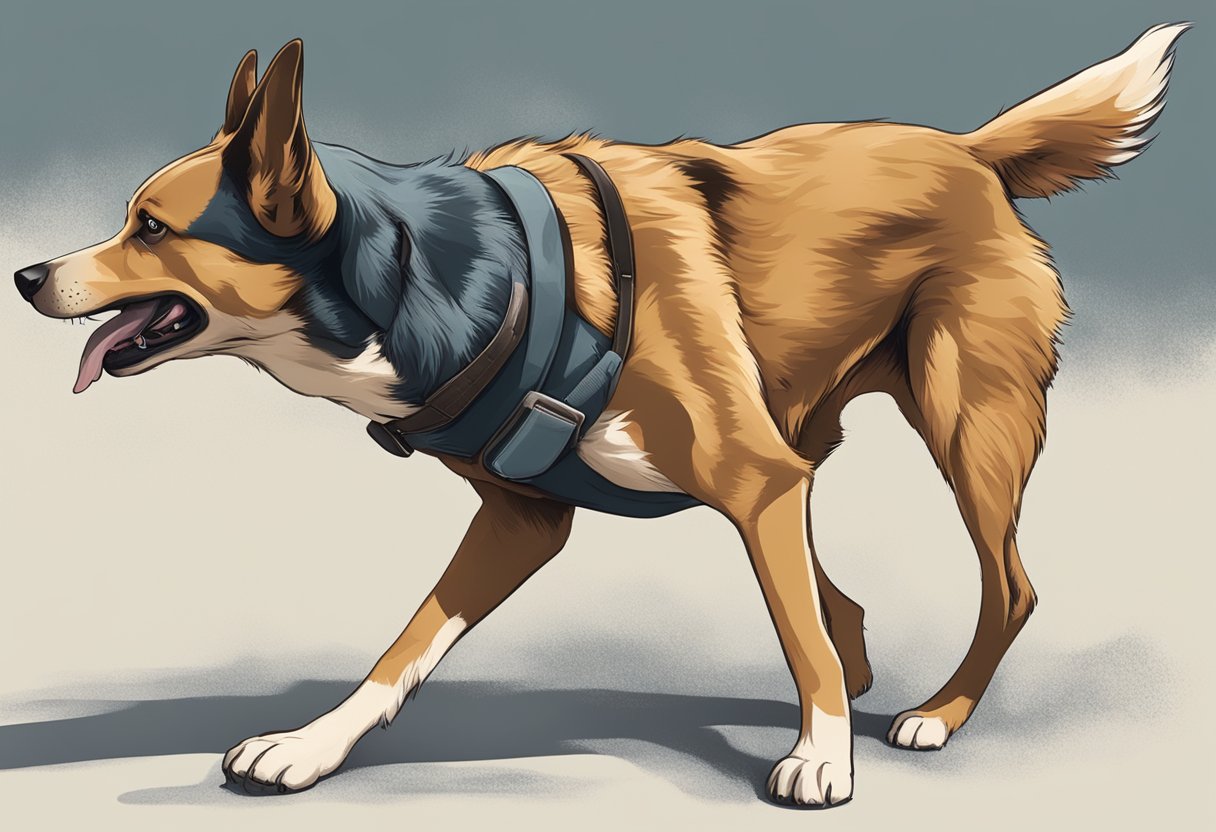
Understanding your dog's body language and communication is crucial in preventing bites and recognizing the motives behind their behavior.
It's important to differentiate between signs of stress and playful gestures to respond appropriately.
Recognizing Signs of Stress and Anxiety
When dogs feel stressed or anxious, their body language can include growling, barking, snapping, and lunging.
These vocalizations and actions are your dog's way of communicating discomfort or fear.
You might notice your dog's body becoming rigid, ears pinned back, eyes widening, or tail tucked. These are clear indications that your dog is not comfortable with the situation.
Signs of Stress and Anxiety:
- Growling and snarling
- Ears pinned back
- Baring teeth
- Tail tucked under
Understanding Playful vs. Aggressive Signals
Distinguishing between playfulness and aggression in your dog involves observing not just a wagging tail but the whole context of their body language.
A relaxed, calm dog may have a loose, wavy tail wag, soft eyes, and an open mouth that resembles a smile, which suggests they are in a playful mood.
In contrast, aggressive signals often consist of a stiff, straight wagging tail, intense stare, and exposed teeth.
If your dog stiffens their body before barking or growling, it can be a sign they are preparing for a potential threat, not looking to play.
Playful vs. Aggressive Signals:
| Signal | Playful | Aggressive |
|---|---|---|
| Wagging Tail | Loose and wavy | Stiff and straight |
| Body Posture | Relaxed, possibly play-bowing | Rigid, may be lunging forward |
| Vocalization | Light barking, possibly yipping | Low growling, snarling |
| Mouth and Teeth | Mouth open, tongue out ('smiling') | Lips curled, teeth bared |
| Eyes | Soft, relaxed gaze | Hard stare, possibly with dilation |
By paying attention to these cues, you can better understand your dog's intentions and mood.
Professional Intervention and Training Strategies
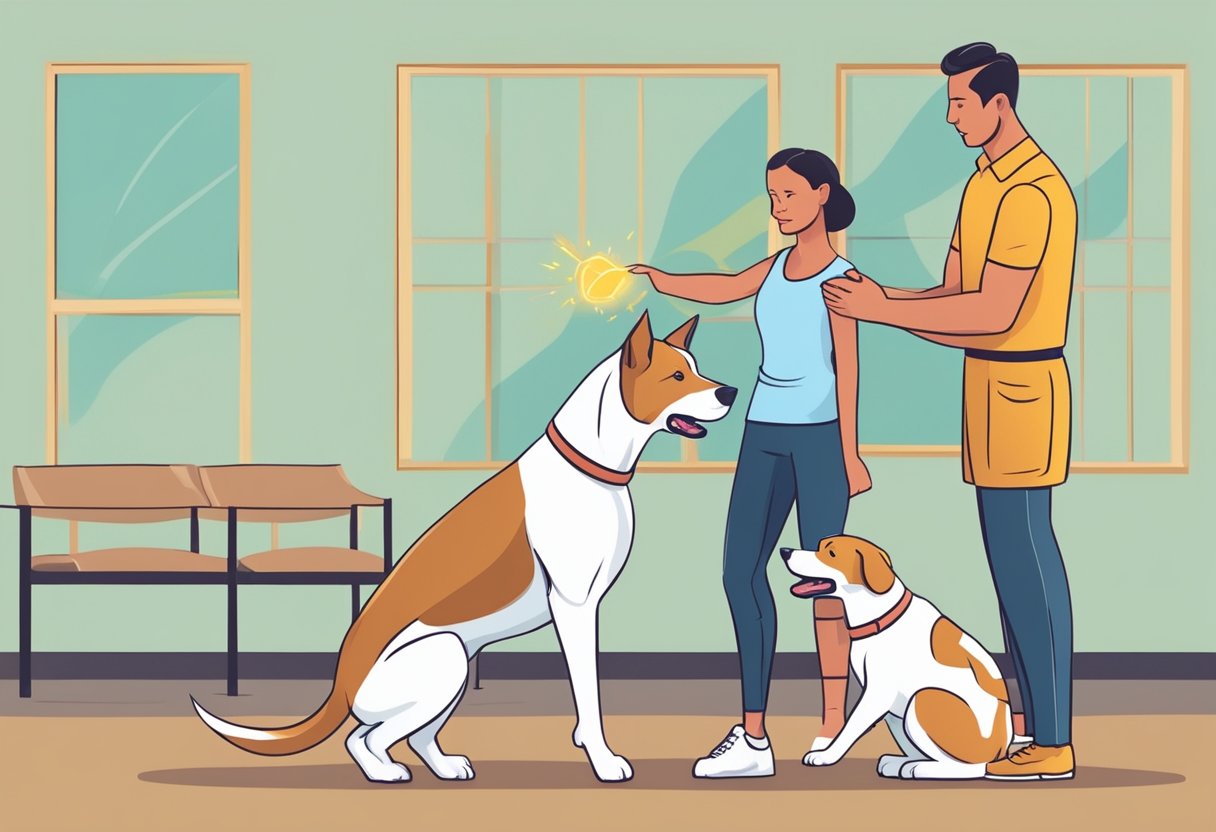
When managing canine aggression, professional intervention and tailored training strategies are essential components for modifying aggressive behavior.
The goal is to create a safe and controlled environment for both the dog and those around it.
Seeking Help from Behavior Experts
It's crucial for you to understand when and where to seek expert help.
A Veterinary Behaviorist or Certified Applied Animal Behaviorist is highly trained to address aggression issues. They can devise a management and treatment plan that may include behavior modification techniques and potentially, medications.
These professionals are equipped to evaluate the emotional state of your dog and can help identify the root cause of the aggressive behavior, which is the first step towards effective management.
Professional Dog Trainers, especially those certified by the Association of Professional Dog Trainers (APDT), can also be invaluable.
A Certified Professional Dog Trainer can work with you and your dog to implement training techniques aimed at managing and eventually reducing aggressive tendencies.
Training Techniques for Aggression Management
Your approach towards training should be consistent and positive. Here are some specific techniques often recommended:
- Basic Cues: Start with basic obedience training to establish trust and communication. Commands like sit, stay, come, and leave it are essential.
- Rewards: Positive reinforcement with treats and praise can effectively foster good behavior. Rewards make the training experience enjoyable and stress-free for your dog.
- Manage Situations: Be proactive in managing environments that trigger your dog's aggression. Knowing what situations to avoid can prevent the aggressive behavior from manifesting.
Aggression management is about creating a structured framework for your dog, where good behavior is consistently encouraged and rewarded. Each dog is unique, and what works for one may not work for another; it’s important to have a personalized training plan created by an expert.
Environmental and Social Factors Affecting Aggression
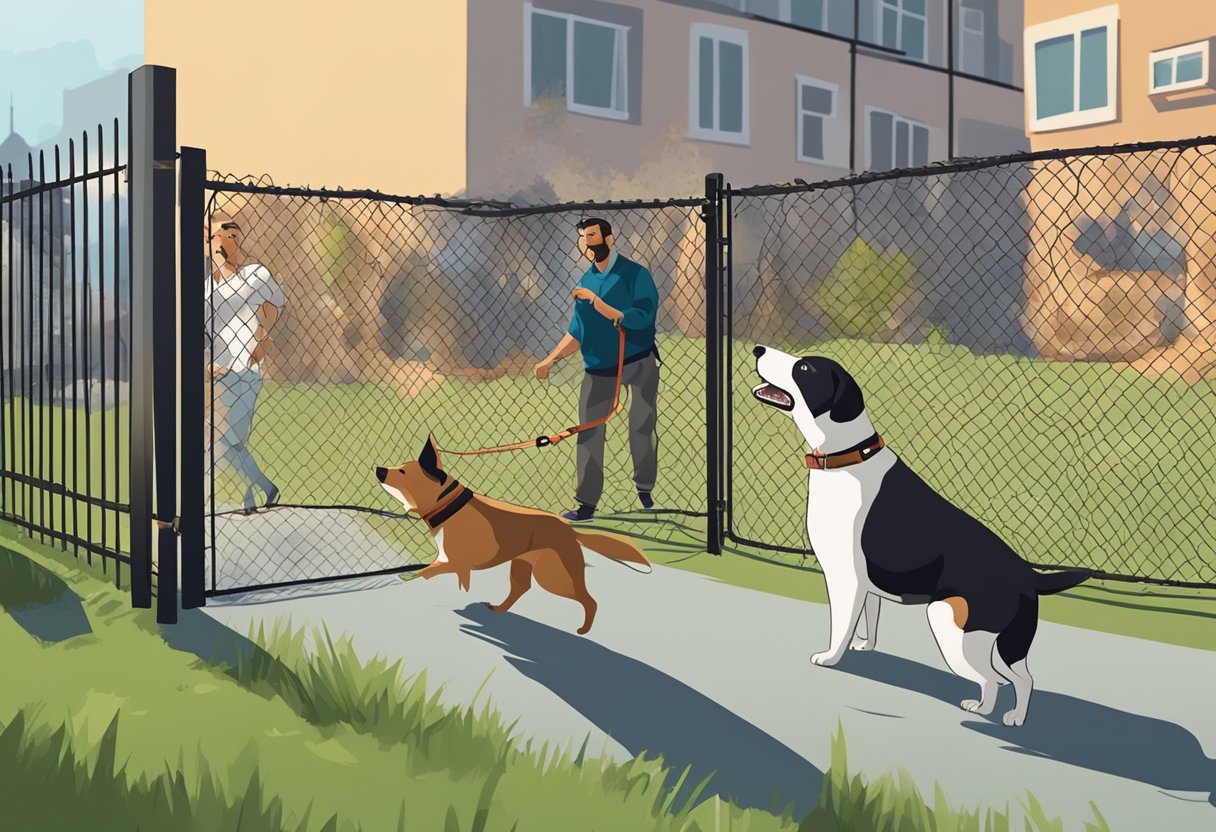
Your dog's aggressive behavior can be significantly influenced by their surroundings and social interactions. Being aware of these factors is crucial for prevention and management.
Impact of Social and Physical Surroundings
The physical and social environment can play a pivotal role in the development of aggressive behaviors in dogs.
For example, exposure to stressful situations such as loud noises or unfamiliar places may trigger aggression.
Unfamiliar dogs entering your pet's territory may also provoke social aggression.
Additionally, homes with limited space can increase stress, potentially leading to a higher likelihood of aggressive incidents.
If your dog is living in a new home or environment, the uncertainty and confusion can contribute to stress, which might manifest as aggression.
Ensure your dog has a personal safe space, and keep them on a leash in areas with triggers like crowds or traffic to curb unexpected aggressive behavior.
The Role of Early Socialization and Experiences
Proper socialization during a dog's formative months is essential.
Early experiences with different people, dogs, and environments help build social skills and reduce fear-based aggression toward strangers and strange dogs.
Without these experiences, dogs might react aggressively out of fear or anxiety.
If a dog is off-leash and not well-socialized, they might perceive an unfamiliar dog as a threat, which could result in aggression.
Similarly, mother dogs with puppies could show aggression when protecting their young. It is important to be understanding and give them space, but also to provide controlled exposure to varied social situations to prevent aggressive tendencies from developing.
Frequently Asked Questions
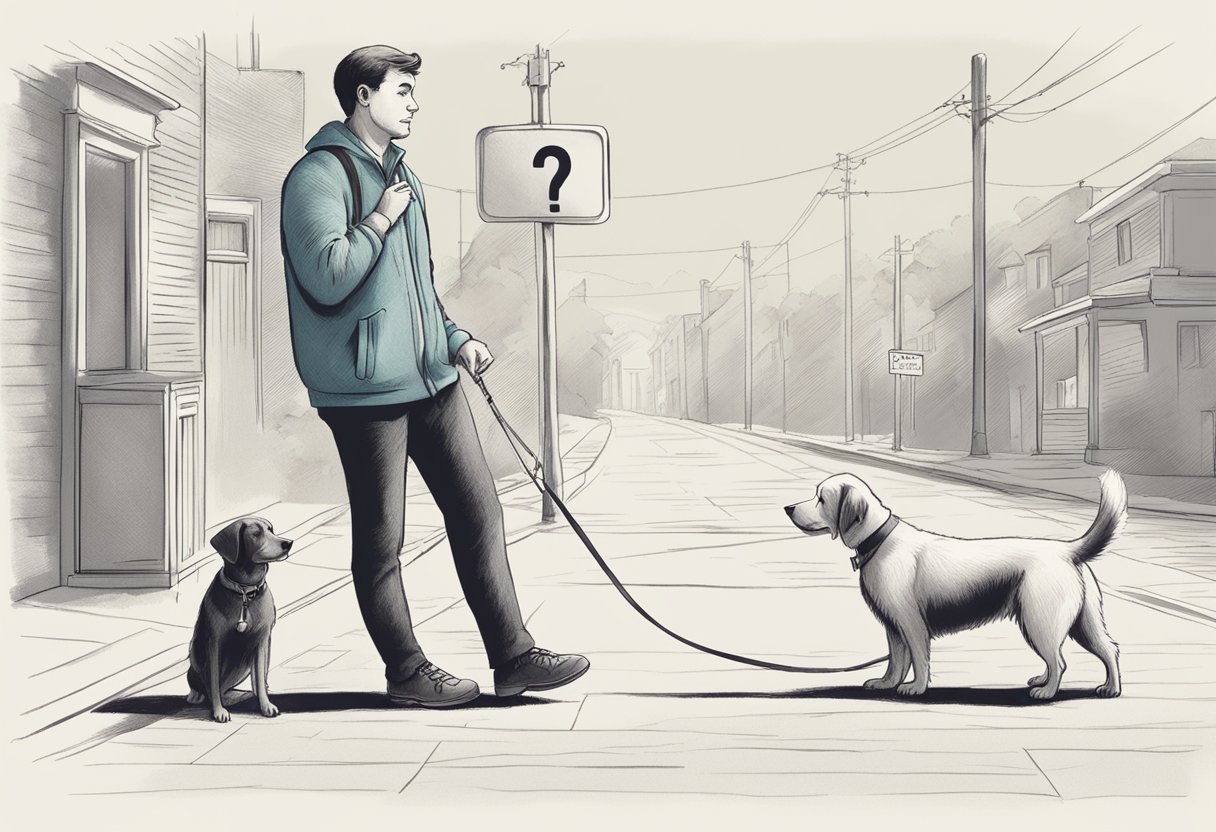
Understanding dog behavior and recognizing the signs of aggression are critical steps in preventing dog bites and managing aggression. Here are answers to common questions that can help you ensure safety and foster positive interactions.
What steps can I take to prevent my dog from biting?
To prevent your dog from biting, establish a foundation of trust and training from an early age.
Consistent positive reinforcement training, socialization with people and other animals, and regular exercise can significantly reduce the risk of biting behavior.
How can I recognize signs of aggression towards humans in my dog?
Signs of aggression towards humans may include growling, baring teeth, a stiff body posture, and direct, intense eye contact.
If you notice your dog displaying warning signals such as these, it's important to take steps to understand and address the underlying causes.
What triggers sudden aggressive behavior in dogs?
Sudden aggressive behavior in dogs can be triggered by pain, fear, territoriality, or protecting resources such as food and toys.
Even factors like anxiety or a change in environment can provoke unexpected aggression.
In what ways can I mitigate aggression displayed by my dog towards other pets?
To mitigate aggression towards other pets, introduce animals in a controlled and neutral setting.
Provide positive reinforcement for calm behavior and separate the animals if tension arises. Professional behavioral training could be beneficial for long-term solutions.
What methods are effective in reducing defensive aggression in canines?
Reduce defensive aggression by avoiding threatening body language, giving your dog space when they feel cornered, and never forcing interaction.
Promote confidence in your dog through obedience training and controlled exposure to various situations.
How can I address and manage protective aggression in my dog?
Manage protective aggression by teaching your dog that not all strangers and new situations are threats.
Use obedience commands as a way to distract and refocus your dog's attention during potentially stressful encounters.
Professional training can provide tailored guidance and interventions for managing protective behaviors.





Comments